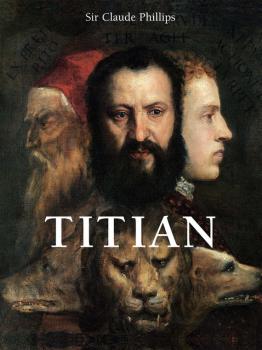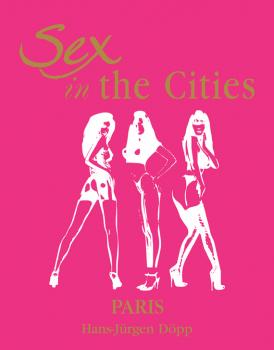Confidential Concepts, Inc.
Все книги издательства Confidential Concepts, Inc.Titian
Not only does Sir Claude Phillips offer the reader a studied and insightful look into the work of one of the world's most cherished painters, but he also invites us to discover the bustling world on the Venetian art circle in which Titian lived and worked. From his early years in the workshop of Giovanni Bellini, to his meeting with Michelangelo and his rivalry with Pordenone, the story of Titian's artistic development also tells the story of the most influential Italian Renaissance art.
Impressions of Ukiyo-E
Ukiyo-e (‘pictures of the floating world’) is a branch of Japanese art which originated during the period of prosperity in Edo (1615–1868). Characteristic of this period, the prints are the collective work of an artist, an engraver, and a printer. Created on account of their low cost thanks to the progression of the technique, they represent daily life, women, actors of kabuki theatre, or even sumo wrestlers. Landscape would also later establish itself as a favourite subject. Moronobu, the founder, Shunsho, Utamaro, Hokusai, and even Hiroshige are the most widely-celebrated artists of the movement. In 1868, Japan opened up to the West. The masterful technique, the delicacy of the works, and their graphic precision immediately seduced the West and influenced greats such as the Impressionists, Van Gogh, and Klimt. This is known as the period of ‘Japonisme’. Through a thematic analysis, Woldemar von Seidlitz and Dora Amsden implicitly underline the immense influence which this movement had on the entire artistic scene of the West. These magnificent prints represent the evolution of the feminine ideal, the place of the Gods, and the importance accorded to landscape, and are also an invaluable witness to a society now long gone.
Gay Art
This book is not a panegyric of homosexuality. It is a scientific study led by Professor James Smalls who teaches art story. His works examines the process of creation and allows one to comprehend the contribution of homosexuality to the evolution of emotional perception. In a time when all barriers have been overcome, this analysis offers a new understanding of our civilisation's masterpieces.
Art of Siberia
The art of Siberia is a fascinating subject, and the artifacts discovered in the hidden archives of the Russian Museum of Ethnography in St. Petersburg are nothing less than extraordinary. Artwork, day-to-day subjects and photos dating from the turn of the century all represent the testimonies of the Siberian people who refused to yield to the hegemony of a modern world.
Gothic Art
Gothic art finds its roots in the powerful architecture of the cathedrals of northern France. It is a medieval art movement that evolved throughout Europe over more than 200 years. Leaving curved Roman forms behind, the architects started using flying buttresses and pointed arches to open up cathedrals to daylight. A period of great economic and social change, the Gothic era also saw the development of a new iconography celebrating the Holy Mary – in drastic contrast to the fearful themes of dark Roman times. Full of rich changes in all of the various art forms (architecture, sculpture, painting, etc.), Gothic art paved the way for the Italian Renaissance and International Gothic movement.
Romanesque Art
In art history, the term ‘Romanesque art’ distinguishes the period between the beginning of the 11 th and the end of the 12 th century. This era showed a great diversity of regional schools each with their own unique style. In architecture as well as in sculpture, Romanesque art is marked by raw forms. Through its rich iconography and captivating text, this work reclaims the importance of this art which is today often overshadowed by the later Gothic style.
Factories
Born in the Industrial Revolution, the factory has long been considered like a monster of iron, subjugating the individual to the collective in an act of mass dehumanisation.Turning away from the pure functionality for which it was built, the factory is evolving into an aesthetic space, sometimes transformed into modern lofts or a museum of contemporary art. The surprising photographs featured in this work help us rediscover the volume, purity of line, beauty, and stunningly modern architecture of these steel-boned monuments.
City Lights
A symbol of massive crowds and solitary desires, the city holds promise for all those that pass through it. Its meandering streets, unexplored neighbourhoods and incessant noise create a landscape that captivates the observer. The lights of the city can conceal or reveal it, transforming its appearance hour by hour, offering countless facets to the passerby. While the light of morning pulls the city from its torpor and renews it for the dawning day, the nocturnal illumination plunges the pedestrian into the strangeness of its mysteries, creating a striking and ephemeral beauty. Between the shadow and the light, these original photographs reveal the fragile glow of the city, and help us rediscover the eternal pulse of these great capitals, simultaneously surprising and sublime.
Bridges
A bridge is a link between two worlds, a point of tension between two separate and often disparate locations. Free, belonging neither to one region or another, the bridge imposes upon the landscape and defies nature. Its existence embodies the will of mankind to construct these necessary bonds between people and places. A symbol of progress and innovation, the bridge, anonymous demonstration of the mastery and the durability of new techniques, is gradually becoming more and more light and fluid, constantly defying state-of-the-art technology. As veritable aesthetic creations, bridges appear today not only as examples of masterful engineering, but also as incredible works of art. With its magnificent photographs, this book invites the reader to rediscover these modern-day sculptures.
Sex in the Cities. Volume 3. Paris
Conveying six centuries of gallantry, serving as the world capital of fashion and love, Paris is the very symbol of eroticism and of joyful sexuality. Offenbach, in La Vie Parisienne, had already created a hymn dedicated to the pleasure of senses. The author, with complete freedom, follows André Malraux’s approach by building an imaginary museum, in a Paris where time no longer exists, space is never-ending, and desire is always present. The iconography is exceptional, coming from unpublished private collections and covering five centuries of Paris’ erotic story. It is accompanied by an academic text which allows the reader to discover this world, never vulgar and always subtle, from when the first man looked at the first woman: eroticism.









